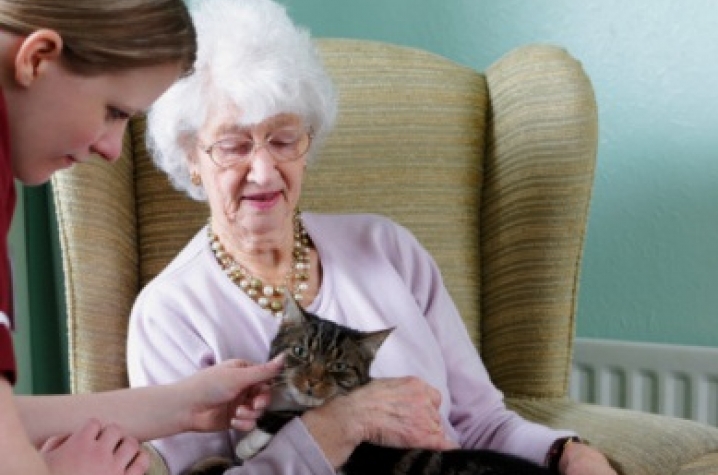Study Shows Hospice Caregivers Need Routine Care Interventions

LEXINGTON, Ky. (Nov. 30, 2011) — A study led by the University of Kentucky researcher Elaine Wittenberg-Lyles found that hospice family caregivers are "second order patients" themselves and require their own unique care needs.
The study, published in a recent issue of Qualitative Health Research, assessed the individual stressors that caregivers experience. The researchers recorded discussions between hospice caregivers and the intervention team. The caregivers were asked to identify and describe the most pressing problems or concerns they faced.
The study enrolled hospice caregivers who were 18 years of age or older and who did not have functional hearing loss, had mild to no cognitive impairment, and had at least a sixth grade education. In addition, all participants had to have access to a standard phone line. In total, the team collected discussions from 81 participants. The study was funded by the National Institute for Nursing Research.
Using a theoretical framework called Assessing Caregivers for Team interventions (ACT), the researchers coded participants' responses in one of three categories: primary stressors, which included talk that related to the performance of caregiving tasks; secondary stressors, talk about the personal impact of performing caregiving tasks; and intrapsychic stressors, talk about their thoughts, feelings and awareness of the caregiving role.
The ACT framework has been proposed as a way to understand caregiver strain and develop customized caregiver interventions to positively affect the caregiving experience and improve outcomes. The goal of the study was to describe the variances among stressors, targeting specific concerns for caregivers.
Wittenberg-Lyles, who holds a joint appointment in the UK College of Communications and the UK Markey Cancer Center, says the study further proved that caregivers are like patients themselves and should be routinely assessed for these stressors so that interventionists may help them with personalized resources and coping strategies.
"It doesn’t matter how well educated you are," said Wittenberg-Lyles. "When someone you love is dying and you are in a position to care for them at home, your home turns into a hospital room and key decisions need to be made hourly. Clinicians should assume that anyone going through the stress and chaos of caring for a terminally ill family member has low health literacy and high needs for education and support."
Hospice is provided to patients who have an estimated life expectancy of six months or less. About 69 percent of hospice patients in the U.S. receive care at home from a family caregiver.
In Wittenberg-Lyles' study, nearly one-third of the hospice patients had a cancer diagnosis, and 21 percent had a primary or secondary diagnosis of Alzheimer's disease or dementia. Nearly 43 percent of caregivers were adult children of the patient, and roughly one-third were spouses/partners. In addition, an overwhelming majority of caregivers were women (79 percent).
MEDIA CONTACT: Allison Perry, (859) 323-2399 or allison.perry@uky.edu




